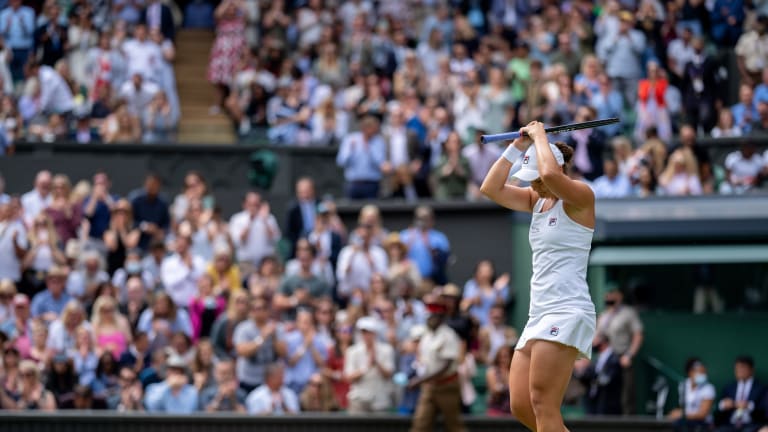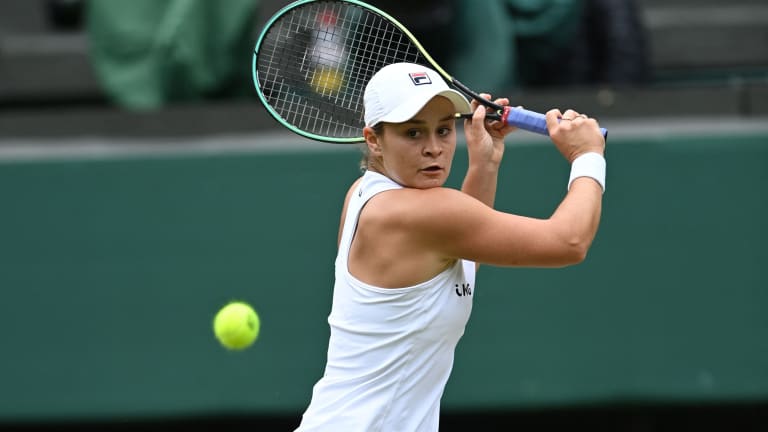Wimbledon
A slice of heaven for Ashleigh Barty, who becomes first Aussie to reach Wimbledon ladies' final since Evonne Goolagong, 41 years ago
By Jul 08, 2021Wimbledon
Darren Cahill: Jannik Sinner watches more Carlos Alcaraz matches than he does with any other player
By Jul 14, 2025Wimbledon
Jannik Sinner reignites Carlos Alcaraz rivalry with Wimbledon victory
By Jul 14, 2025Wimbledon
Jannik Sinner reversed his usual pattern against Carlos Alcaraz. It won him Wimbledon
By Jul 14, 2025Wimbledon
Veronika Kudermetova and Elise Mertens win women's doubles title at Wimbledon
By Jul 13, 2025Wimbledon
Joy to the World: What Carlos Alcaraz has, and what we are enjoying
By Jul 13, 2025Wimbledon
Iga Swiatek keeps surprising herself after Wimbledon title caps "surreal" turnaround on grass
By Jul 12, 2025Wimbledon
Iga Swiatek wins first Wimbledon, sixth Grand Slam title with 6-0, 6-0 rout of Amanda Anisimova
By Jul 12, 2025Wimbledon
Wimbledon men's final preview: Will Carlos Alcaraz, Jannik Sinner share another epic?
By Jul 12, 2025Wimbledon
Julian Cash, Lloyd Glasspool become first all-British pair to win Wimbledon men's doubles title since 1936
By Jul 12, 2025A slice of heaven for Ashleigh Barty, who becomes first Aussie to reach Wimbledon ladies' final since Evonne Goolagong, 41 years ago
The crafty world No. 1 defeated former champion Angelique Kerber, 6-3, 7-6 (3) to reach her second career Grand Slam singles final.
Published Jul 08, 2021
Advertising
Advertising

A former Wimbledon junior champion, Barty will return to a title match on Centre Court.
© FREE FOR EDITORIAL USE. This image is offered licence free for editorial use only by the AELTC. It can be published on all platforms and can be archived. Copyright of All England Lawn Tennis Club. Commercial use is prohibited. ©AELTC/Jed Leicester
Advertising

Barty's backhand slice is one of tennis' most lethal weapons.
© AFP via Getty Images